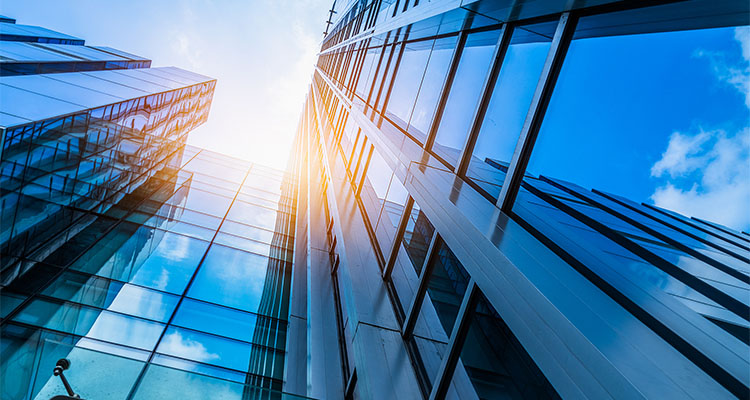
The overlooked obstacle to net-zero goals
Globally, there has been a significant shift towards implementing more sustainable practices to help reach net-zero goals and combat climate change. Between eco-friendly materials and technologies, the construction industry is under immense pressure to put renewable resources into practice and ensure buildings are at optimal efficiency to help with decarbonisation. Despite introducing these elements, buildings are still susceptible to thermal bridging which can compromise the energy efficiency of the construction and therefore contributes to excessive energy consumption. General Manager of Armatherm, Paul Beech, discusses the importance of identifying thermal bridging during initial plans and the role thermal break materials play in helping to reach a sustainable future.
Since the plans to reach Net Zero were announced in June 2019, the industry has made a conscious effort to use more sustainable materials with 70 per cent of

projects incorporating eco-friendly targets, and 43 per cent actually meeting them. However, in this time, the price of sustainable materials has increased considerably with 70-to-80 per cent of them costing more than traditional materials. To aid with meeting sustainability targets, architects have also implemented other elements such as solar panels into projects as a renewable energy source. These have, of course, contributed to helping the UK cut carbon emissions by 53 per cent, however, with other targets in place to be met in the lead up to 2050, experts are unsure that with current practices the UK will meet them and consequently Net Zero.
There are a number of reasons that this could be the case, but a main cause that can often be overlooked, is the issues associated with thermal bridging. Because of these weak spots in the building envelope, it is easier for heat to transfer from the inside out and vice versa. Due to this, the inside temperature fluctuates, and more energy is required to keep it at a certain temperature. This overconsumption of energy is contributing to the problems with reaching Net Zero and therefore needs addressing if the UK is to meet its targets.
Sustainable solutions
In addition to this, thermal bridging is also a main factor for causing condensation which, when left untreated, can cause mould and risk occupants’ health. Not only can it cause issues with damp and mould, the settling of this moisture on the cold spots of the building structure can, over time, damage the materials used. To combat this and fix the problems with the decayed materials, Armatherm has seen a rise in the amount of retrofitting projects being completed. These projects are, however, more costly to be completed and many are choosing to demolish and rebuild instead. Even though this may be more cost effective than retrofit projects it isn’t a sustainable approach. Factors such as air, soil and water pollution, waste generation and energy consumption all contribute negatively to the environment.
These are two possible outcomes that enable solutions to combat thermal bridging to be implemented. However, the most sustainable practice would be to identify the areas where thermal bridging can occur in initial plans and prepare a solution to be put in place before construction starts.
Proactive planning
Typical areas where thermal bridging can occur are in applications such as balconies and canopies, cladding, column bases, and parapet roof penetration. Thermal break materials have been developed to combat this issue and because these areas are often load-bearing, they typically need installing at the beginning of the construction process.

In the race to reach Net Zero, thermal break materials will play an integral part in helping us achieve a sustainable future. With the burning of fossil fuels for energy contributing to over 75 per cent of greenhouse gases, it is essential that they are significantly reduced in the foreseeable future to meet goals. By implementing thermal breaks where thermal bridging occurs it will help to isolate the building envelope, working towards achieving continuous insulation, and reducing heat loss by up to 75 per cent, ultimately decreasing energy consumption, and therefore the burning of fossil fuels.
As the construction sector continues to delve deeper into sustainable practices, installing renewable energy resources and utilising eco-friendly products, it is vital that problems with buildings’ inefficiencies are addressed to help make reaching net-zero goals more achievable. It is daunting how close 2050 is, however, identifying where thermal bridging occurs and installing solutions can improve a building’s energy efficiency by up to 27 per cent. By planning ahead and implementing these solutions now, it will also extend the longevity of the building, reducing the need for costly demolition or retrofit projects.
In conclusion, while the construction industry has made commendable strides towards sustainability and reaching Net Zero, it’s clear that simply incorporating renewable technologies and eco-friendly materials isn’t enough. Instead, architects must also address inefficiency issues such as thermal bridging. Thermal break materials offer a high-impact solution by significantly reducing heat loss and cutting down on energy consumption. By identifying potential problem areas early in the design phase and integrating thermal breaks from the outset, the industry can avoid costly retrofits or unsustainable demolition practices later down the line. Ultimately, proactive planning today is the key to building a truly sustainable tomorrow.
For a list of the sources used in this article, please contact the editor.
Armatherm™ is one of the leading suppliers of structural thermal break materials for the construction industry. The company’s goal is to provide architects, structural engineers and building design professionals with effective solutions to prevent thermal bridging.